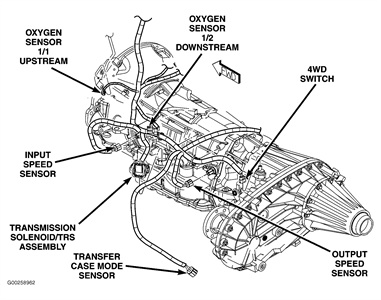
South Florida Transmissions
5230 SE Federal Highway
Stuart, FL, 34997
772.678.6625
Fax: 772.678.6635
The Powertrain control module microprocessor is the brain of the vehicle. It is fed information by sensors around the entire automobile. In the transmission they are responsible for shift timing and various aspects of shifting. The transmission control module or “TCM” is another microprocessor used to regulate the function of the transmission. All of these microprocessors are fed information from the all the sensors. Here is a list of some of the sensors about your car and their functions to help your car function properly. They also alert the main processor if their is a malfunction and store the code so that our technicians at our Stuart Transmission Repair Shop can properly diagnose your transmission problems.
The Transmission Input Speed Sensor
This sensor measures the revolutions per minute or RPMs of the input shaft. As the Torque convertor sends the proper pressure to the clutches and planetary gear assembly the car begins to move. When the car or truck is moving, the transmission input shaft rotates at the same RPM as the engine. Your car's speed relies on the input speed and the gear ratio. If this doesn't happen this will alert the PCM that there is a specific problem.

The Transmission Output Speed Sensor
This sensor measures the speed of the "output shaft" in revolutions per minute.
Vehicle Speed Sensor
This sensor measures pure speed. If this sensor fails, the transmission will malfunction. This can make it appear as if the transmission is damaged but that is why you should have a trusted transmission shop that will only replace the sensor and not make you believe you need a costly repair.
Airflow sensor
This measures air flow into the engine intake. If this sensor fails it can make the transmission shifting become erratic. This also can make it appear that your transmission has severe problems. Many times, we are able to just change out the sensor and everything is restored to normal working order.
Turbine Speed Shaft Sensor
This measures the shaft's speed rotation inside the transmission which in turn determines the amount of clutch slipping is happening. This will tell us if there is a problem with the clutch or if the sensor is malfunctioning.
Intake Air Temperature Sensor
This tells the PCM the temperature of the air going into the engine's intake and also controls the amount of air that is mixed with the fuel. It is also part of the pressure control system for the transmission. If this sensor malfunctions it can cause abnormal shifting.
Coolant Temperature sensor
The PCM uses this sensor to also regulate the air mixture ratio with fuel and also measures the radiator fluid temperature as well as restrict the clutch in cooler temperatures.
Throttle position sensor
This measures throttle movement and sends information to the TCM that and sudden increase or decrease in acceleration is happening. A failing sensor of this kind can cause shifting issues that would appear as if the transmission is failing.
So as we see, sensors play a big role in function as well as diagnosis. It is important to know that if you seem to be having transmission problems that sometimes the problem could just be a faulty sensor. But sometimes the sensor is picking up a larger problem that should be addressed right away. Our reputation as the most trusted repair shop in Martin County proceeds us at South Florida Transmissions in Stuart, Florida because we have thousands of loyal customers who know they can trust us. Read their stories here.